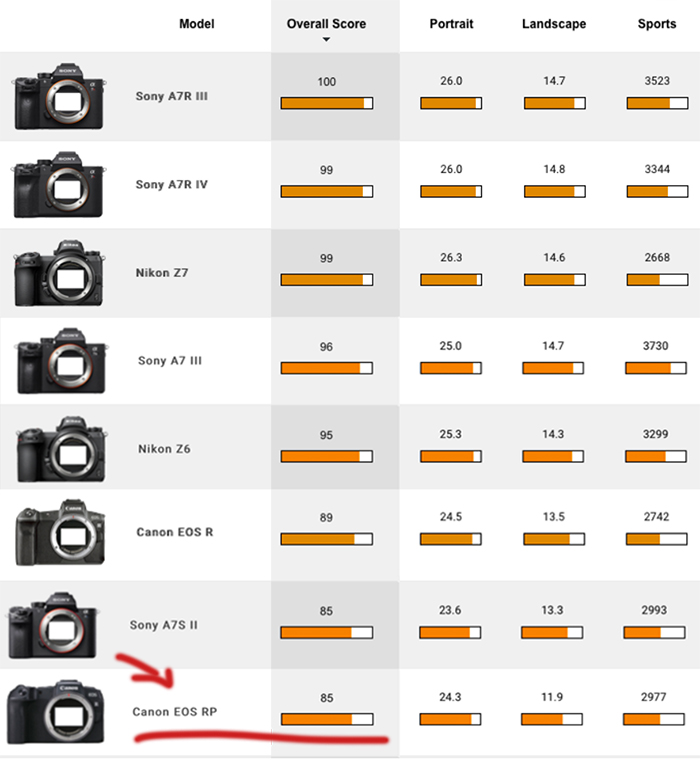The Z50 is a good, but not exceptional, debut for Nikon’s Z mount APS-C mirrorless system. It has great handling, good shooting speeds and autofocus, nice image quality and solid video performance for its intended market.
If this camera had come out even a year ago, it would have been near the top of my list. However, even though I love the Z50’s handling and form factor, it’s in second place or lower in every other category. The A6400 has better autofocus, the X-T30 better video performance, and the M6 Mark II better image quality and shooting speeds.
That leaves the Z50 near the bottom of the pack, but that doesn’t mean it’s not worth your consideration. There are no serious flaws and if you already have some Nikon lenses, whether Z mount or DSLR, the Z50 would be wise choice, particularly if you like a camera that’s easy to handle. If not, I’d recommend Fujifilm’s X-T30 instead — it handles nearly as well and is a better all-around camera.
Canon EOS-RP sensor gets tested at DxOmark: “not that far behind the sensors in the Nikon Z 6 and Sony A7 III”

DxOmark published the full EOS-RP sensor test:
As the first and only entry-level full-frame mirrorless camera currently available, the Canon EOS RP provides an easier entry into the full-frame mirrorless market than the EOS R from a pricing point of view. However, it might be too much to expect the RP sensor to match the current leading-edge sensor performance in the considerably more expensive mid-range mirrorless models. At the moment, those wanting better sensor performance from a Canon full-frame mirrorless camera, particularly with regard to dynamic range, will have to spend considerably more on the Canon EOS R.
This said, noise levels and color accuracy are very good and not that far behind the sensors in the Nikon Z 6 and Sony A7 III. These traits, combined with its inherent portability and generally good mix of features and ergonomics, make the RP an attractive option for travel, street, and yes, even landscape photographers.
